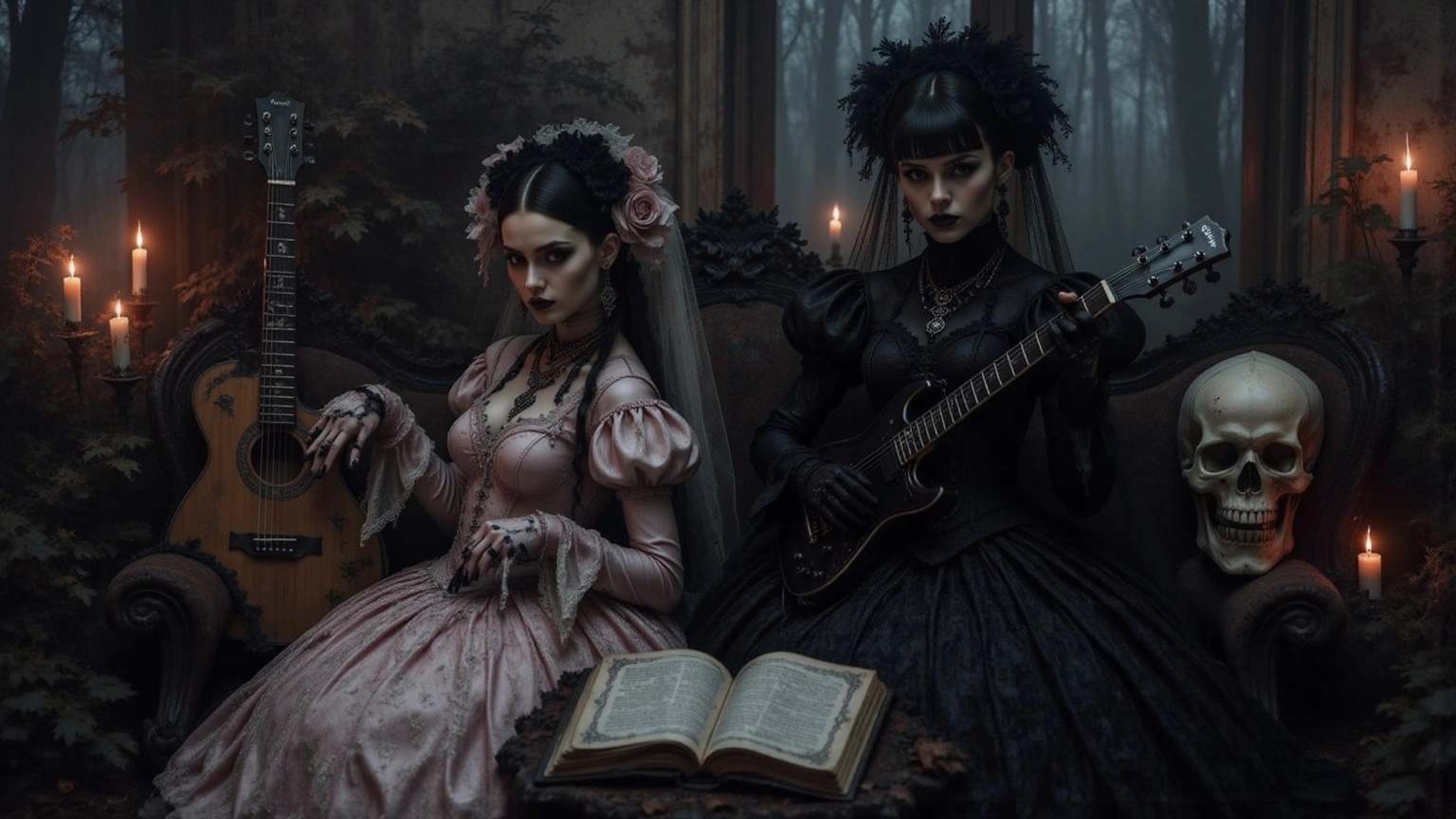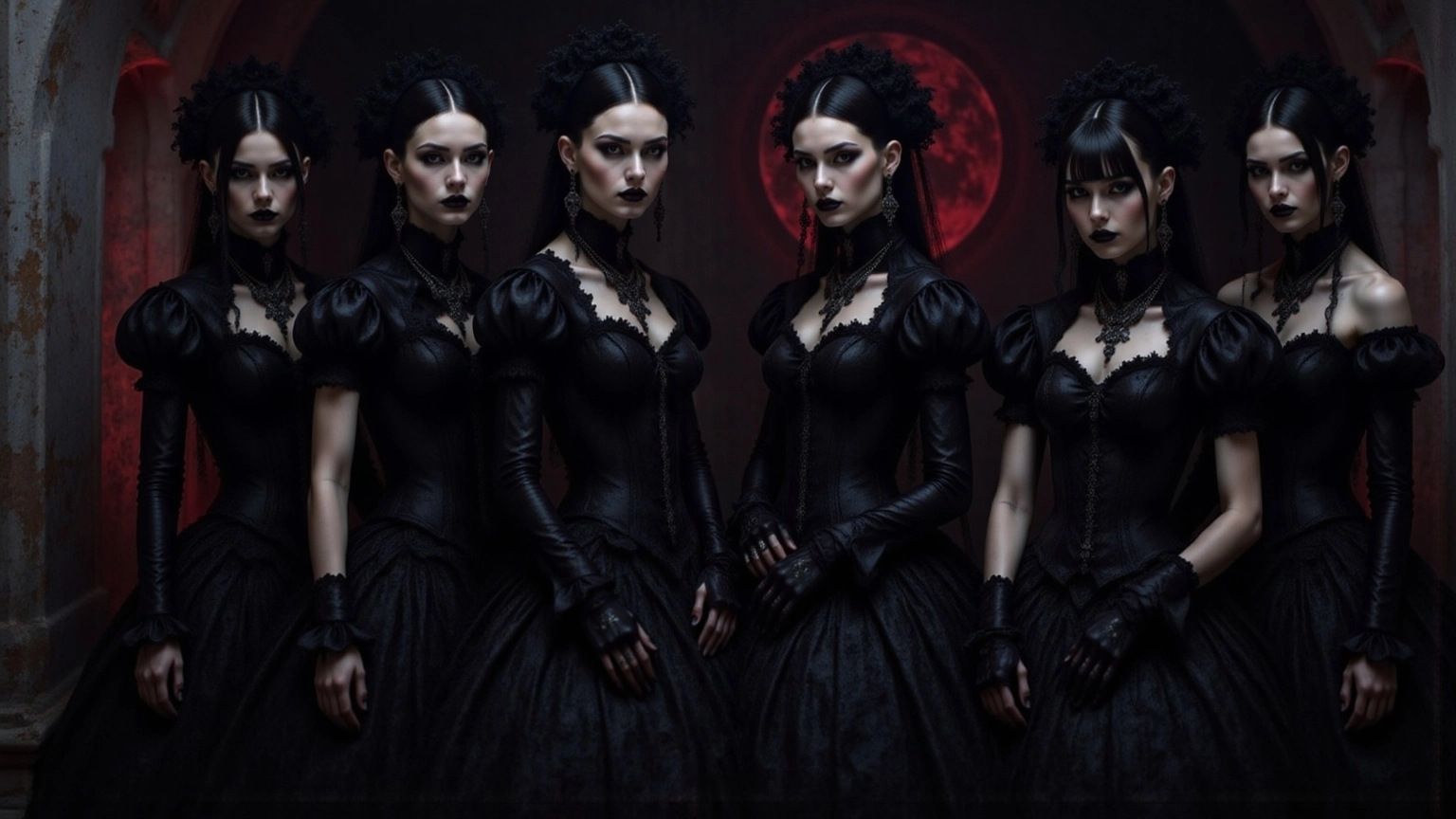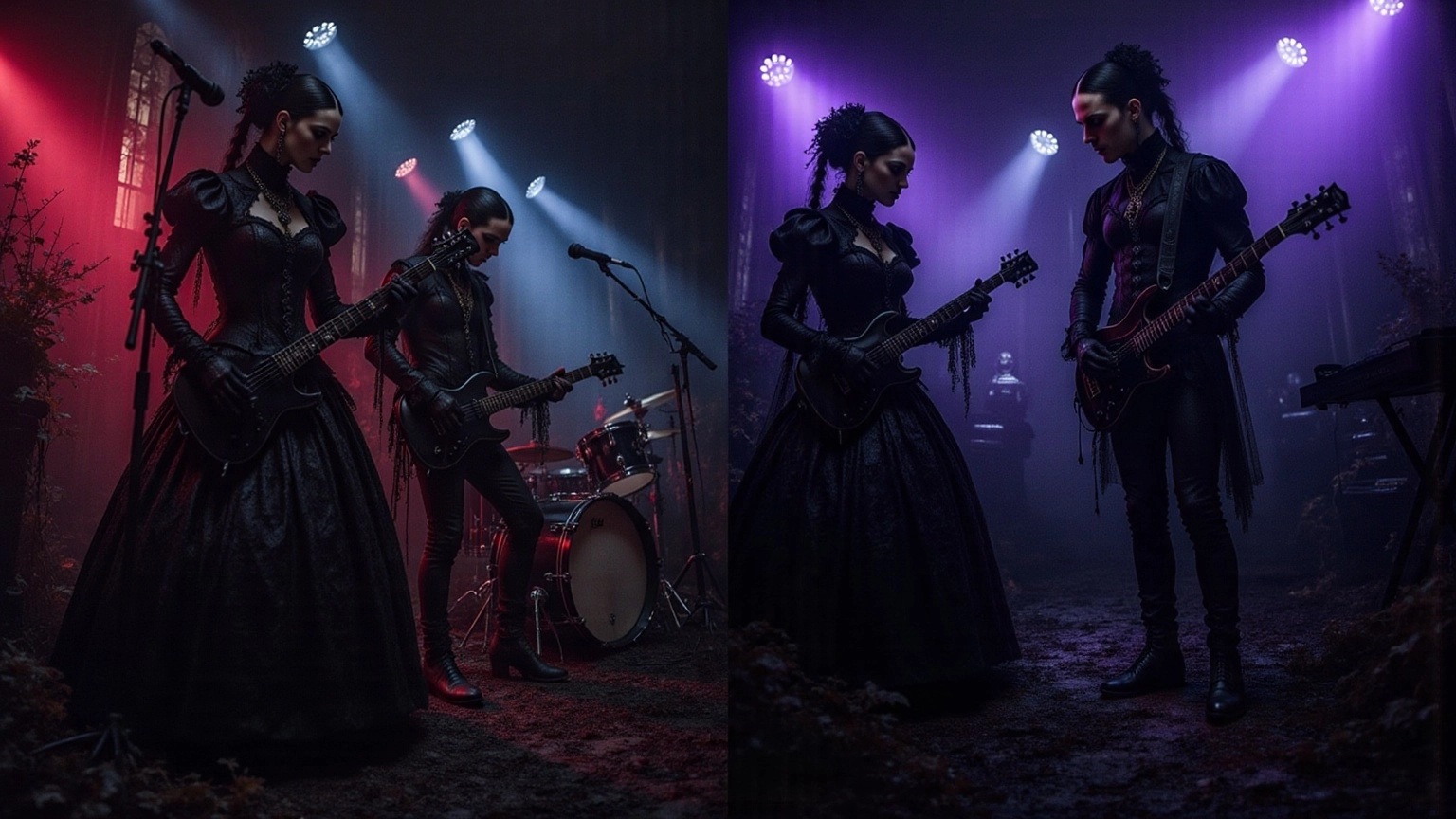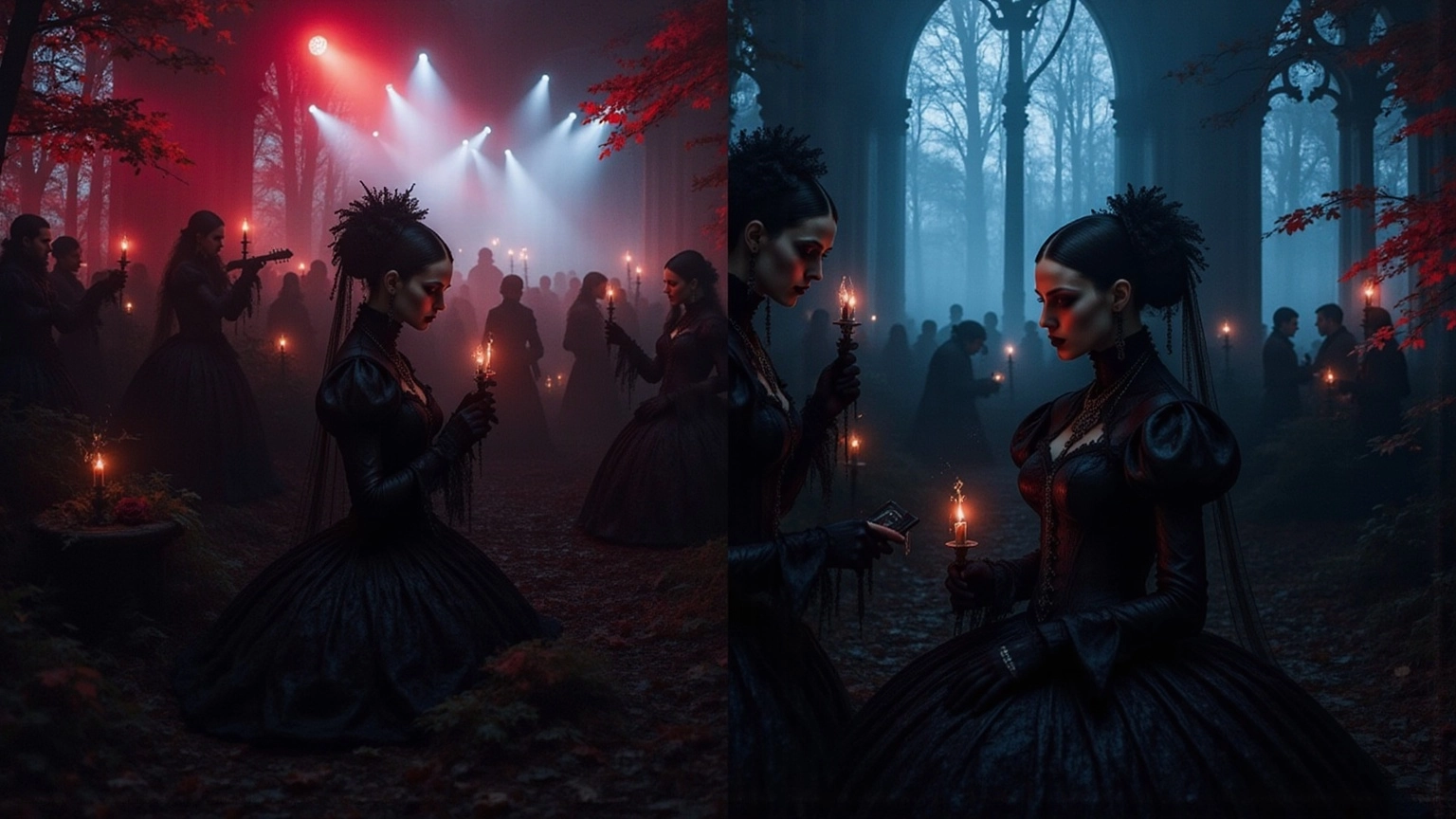
Emo vs Goth Style: Unraveling Aesthetics and Cultural Roots
Share
Overview
Dive into the shadows of subculture—emo and goth, two distinct realms born from the rebellious heart of punk rock. Emo, with its raw emotional expression and personal storytelling, whispers secrets of the soul. In contrast, goth plunges into the abyss, exploring darker, existential themes that chill and intrigue.
But what fuels these identities? The article unravels their musical influences, fashion aesthetics, and community dynamics, painting a vivid picture of how each subculture weaves its own cultural narrative. It’s not just a style; it’s a sanctuary, a place where members find belonging amidst the chaos of the world.
Are you ready to explore the depths of these cultural currents? Each thread tells a story, inviting you to resonate with the unique rhythms of emo and goth. Embrace the allure and let the echoes of their legacies guide you into a world where every note and every stitch speaks volumes.
Introduction
The vibrant clash of emo and goth styles unveils two distinct subcultures birthed from the punk rock movement, each steeped in its own rich history and aesthetic. Emo, with its emotional depth and introspective lyrics, becomes a canvas for raw personal storytelling. In contrast, goth plunges into the shadows of existence, drawing inspiration from gothic literature and horror.
As these communities morph and evolve, one burning question lingers: how do these opposing worlds shape their followers, and what hidden narratives weave their identities? Delving into the intricate layers of emo and goth not only reveals their unique characteristics but also illuminates the cultural threads binding them together.
Defining Emo and Goth: Origins and Characteristics
The differences in emo vs goth style showcase two distinct subcultures, birthed from the punk rock movement, each pulsating with its own unique characteristics and historical roots. Emo, short for 'emotional hardcore,' sprang forth in the mid-1980s from the Washington D.C. hardcore punk scene, a raw expression of emotional turmoil and introspective lyrics. It’s a canvas painted with personal experiences, often drenched in themes of heartbreak and angst. Remember Dashboard Confessional? Millions sold during the early 2000s emo wave, a testament to its cultural impact. Guy Picciotto, the lead singer of Rites of Spring, once declared, "I never recognized emo as a genre of music," igniting the eternal debate over Emo's true essence.
Now, shift your gaze to the shadows—a dark music genre that emerged in the late 1970s and early 1980s, evolving from the post-punk scene in the UK, a reaction against punk rock's commercialization. Heavily influenced by gothic literature and horror films, this subculture embraces the macabre, exploring death and existential dread. Enter The Sisters of Mercy and Bauhaus—pioneers of the Gothic sound, crafting a musical landscape that resonates with a community steeped in darkly romantic introspection.
While both subcultures share a punk foundation, their thematic focuses diverge sharply when considering emo vs goth style. The debate of emo vs goth style highlights emo as a vessel for emotional expression and personal storytelling, while Gothic delves into a haunting exploration of darker realms. This distinction is underscored by the cultural weight each carries—Emo, a mirror of vulnerability and turmoil; Gothic, a fascination with the mysterious unknown. Studies reveal a stark reality:
- 53% of alternative subculture teens sampled had attempted self-harm
- 47% had faced the abyss of suicide
Yet, a study from the University of Glasgow unveils the goth community's nonviolent and accepting nature, providing invaluable social and psychological support to those in need. The evolution of these niche communities reflects broader cultural shifts—Emo's roots in youth struggles intertwined with a rich tapestry of artistic and literary influences. What secrets lie beneath the surface of these worlds? Dive deeper, if you dare.

Contrasting Aesthetics: Visual Elements of Emo vs Goth
The collision of emo vs goth style creates two worlds, each resonating with its own cultural heartbeat. Emo fashion, a realm of casual comfort, is draped in band t-shirts, skinny jeans, and the ever-reliable Converse. Dark tones dominate the palette of the emo vs goth style, yet flickers of red or purple pierce through, embodying the emotional turmoil that runs deep in this community. Picture the hairstyles commonly associated with emo vs goth style: straightened locks, bangs that flirt with the eyes, and a veil of introspection and vulnerability.
Now, shift your gaze. Dark Wave fashion bursts forth with its dramatic flair, a tapestry woven from Victorian and medieval threads. Corsets, lace, velvet, and flowing fabrics dance together, cloaked in a sea of black, occasionally ignited by deep reds, purples, or metallics. What are your thoughts on makeup in the context of emo vs goth style? It’s a bold declaration of emo vs goth style—heavy eyeliner, pale skin, dark lips—each stroke a vivid contrast, a siren call to the dark and mysterious.
And here’s the twist: dark fashion is surging, especially among Gen Z. The #goth hashtag on TikTok? A staggering 8.8 billion views, a testament to a revival of this aesthetic. Fashion expert Andrew Groves hits the nail on the head—when discussing emo vs goth style, he notes that goth aesthetics blend history with modernity, creating a timeless allure. The goth subculture, rich in history, along with the emo vs goth style, offers a sanctuary of social and emotional support, deepening its visual narrative. As we look to 2025, expect a resurgence of Victorian-inspired pieces and dramatic silhouettes, a testament to the evolution of this enduring style. This visual dichotomy doesn’t just showcase aesthetic preferences; it whispers the deeper cultural stories that linger in the shadows.

Musical Influences: Emo vs Goth Soundscapes
Musically, the emo vs goth style diverge in striking ways, echoing their distinct cultural narratives. Emo music bursts forth with expressive lyrics and a melodic sound, often fusing punk rock's raw energy with indie and pop influences. Think of My Chemical Romance, whose seminal album "The Black Parade" (2006) and Dashboard Confessional's hauntingly influential "The Places You Have Come to Fear the Most" (2003) as prime examples. These bands delve into themes of love, loss, and personal struggle, resonating deeply with those yearning for connection through shared experiences. As Gerard Way, the enigmatic frontman of My Chemical Romance, chillingly puts it, "The hearse you die to get in again," encapsulating the emotional depth that defines the genre.
On the flip side, gothic music roots itself in the haunting echoes of the emo vs goth style, a genre that was born from the shadows of post-punk groups like Bauhaus and Siouxsie and the Banshees. This genre thrives on dark, atmospheric sounds, with lyrics that explore death, the supernatural, and existential angst. It has evolved, branching into subgenres like darkwave and industrial, further enriching the Gothic soundscape. The melodies linger like ghosts, and the introspective lyrics invite listeners into a realm where life's darker aspects are not just acknowledged but celebrated. Hayley Williams of Paramore reflects on this journey, asking, "How did we get here? 'I used to know you so well,'" emphasizing the enduring feelings that echo through both genres, despite their evolution.

Community and Lifestyle: Emo vs Goth
Emo and alternative cultures pulse with vibrant communities, offering a sanctuary of support and belonging. Emo scenes revolve around music, where fans unite at concerts, sharing their raw experiences on social media. This emotional openness ignites deep connections, allowing individuals to bond over their shared feelings and experiences.
But what of the shadows? Subcultures steeped in darkness thrive on art, literature, and the somber beauty of life. Alternative gatherings—think themed parties and festivals—celebrate the aesthetic and cultural threads woven into the fabric of the subculture. These events forge community ties through a shared passion for gothic literature, horror films, and alternative fashion, creating a rich tapestry of connections. This cultural engagement not only elevates individual experiences but also fortifies the collective identity of the Goth community. Dive deeper, explore the allure of the night.

Conclusion
Dive into the depths of emo and goth styles, where cultural significance intertwines with aesthetic divergence. Born from the punk rock lineage, these subcultures take wildly different paths in their expressions and thematic focuses. Emo spills forth emotional storytelling, echoing personal struggles and heartfelt experiences, while goth dances in the shadows, drawing inspiration from gothic literature and existential musings.
The article's pulse beats with contrasting aesthetics, musical influences, and community dynamics that define these worlds. Emo fashion whispers of casual comfort and personal expression, while goth fashion roars with dramatic, historical flair. Musically, emo tugs at the heartstrings with melodic, emotive lyrics, whereas goth envelops you in atmospheric, haunting soundscapes. Both communities stand as vital support networks, weaving connections through shared experiences and cultural engagement.
Ultimately, grasping the nuances of emo and goth styles not only deepens your appreciation for these vibrant subcultures but also highlights their significance in the broader cultural narrative. As these aesthetics evolve and resonate with new generations, they remind us of the potent forces of self-expression and community in navigating the complexities of identity and emotion. Embrace the differences and similarities within these realms—dare to explore the cultural roots, and celebrate the individuality and connection that flourish in this diverse landscape.
Frequently Asked Questions
What are the origins of emo and goth subcultures?
Emo originated in the mid-1980s from the Washington D.C. hardcore punk scene, focusing on emotional expression and introspective lyrics. Goth emerged in the late 1970s and early 1980s from the post-punk scene in the UK, influenced by gothic literature and horror films.
How does emo music differ from goth music?
Emo music is characterized by personal experiences and themes of heartbreak and emotional turmoil, while goth music explores darker themes such as death and existential dread.
What are some notable bands associated with emo and goth?
Dashboard Confessional is a notable emo band, while The Sisters of Mercy and Bauhaus are pioneers of the goth sound.
What themes are prevalent in emo and goth subcultures?
Emo focuses on vulnerability and personal storytelling, whereas goth delves into the mysterious and macabre.
What impact do emo and goth subcultures have on youth?
Studies indicate that a significant percentage of alternative subculture teens have faced self-harm and suicidal thoughts. However, the goth community is noted for its nonviolent and accepting nature, providing social and psychological support.
How do emo and goth communities reflect broader cultural shifts?
Emo's roots are intertwined with youth struggles and emotional expression, while goth reflects a fascination with darker themes, showcasing the evolution of artistic and literary influences in society.
